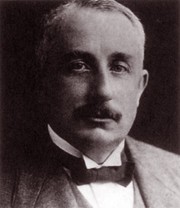
“[…] for his work on fluorescence in biochemistry, in which he presented the spectrochemical results he obtained from twenty-five years of experimental research. These results are of great importance not only to physico-chemical sciences but also to biological sciences as a whole and medicine in particular.”
Die Gutachter waren sich einig, dass D.s Arbeit ein Standardwerk für die Technik der Fluoreszenzbestimmung darstelle, also für die quantitative Bestimmung oder den qualitativen Nachweis von sehr geringen Stoffmengen. Bei dieser Technik werden die zu bestimmenden Verbindungen auf chemischem Weg in fluoreszierende Körper überführt und können auf diese Weise bestimmt werden. D. habe die Analysetechnik nicht nur entschieden verfeinert (Tieftemperaturen), sondern als erster die vorher kaum bekannte infrarote Fluoreszenz untersucht. Die Methode, die sich durch eine hohe Empfindlichkeit auszeichnet, komme nicht nur der Chemie, sondern auch der Medizin zugute, da damit beispielsweise auch in vivo Porphyrine, Urobilin, Bilirubin und gewisse Bakterien nachgewiesen werden können.

